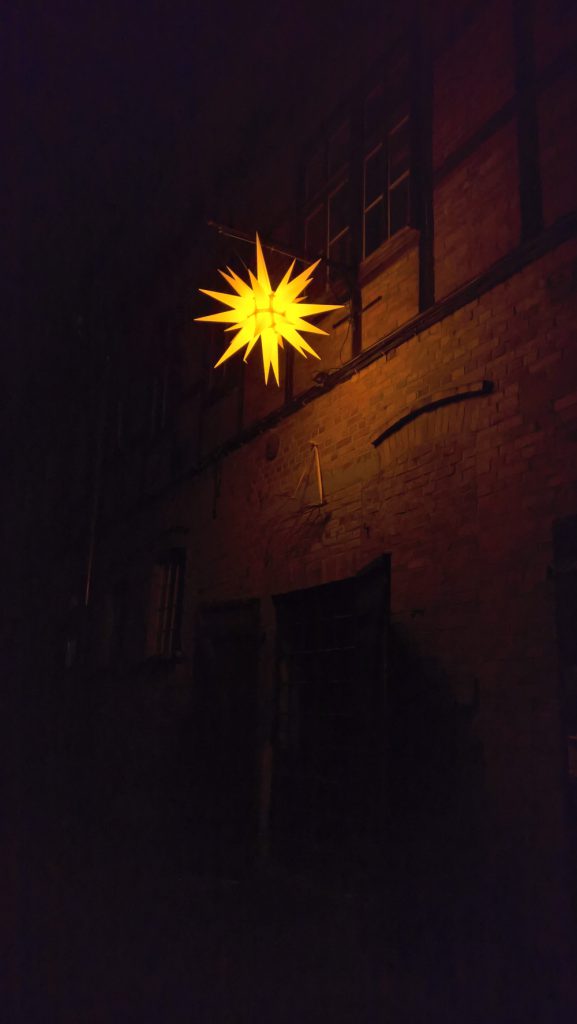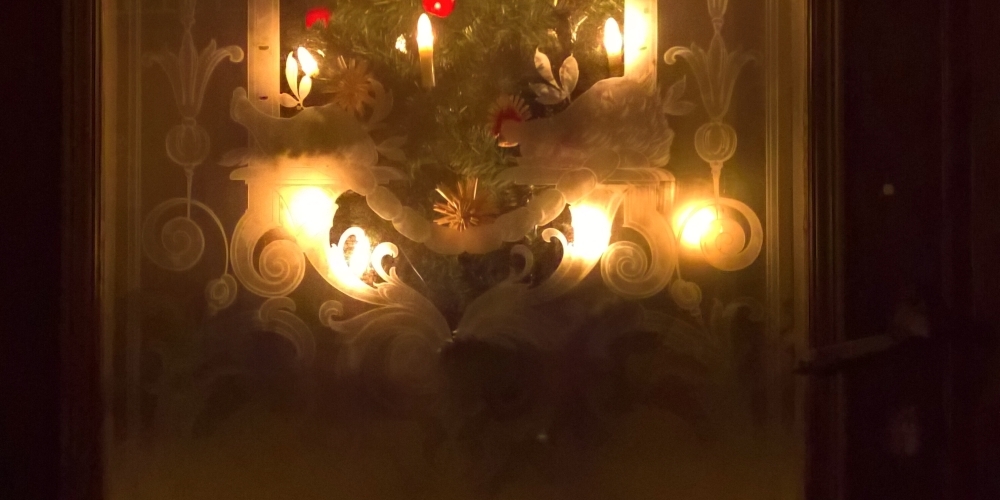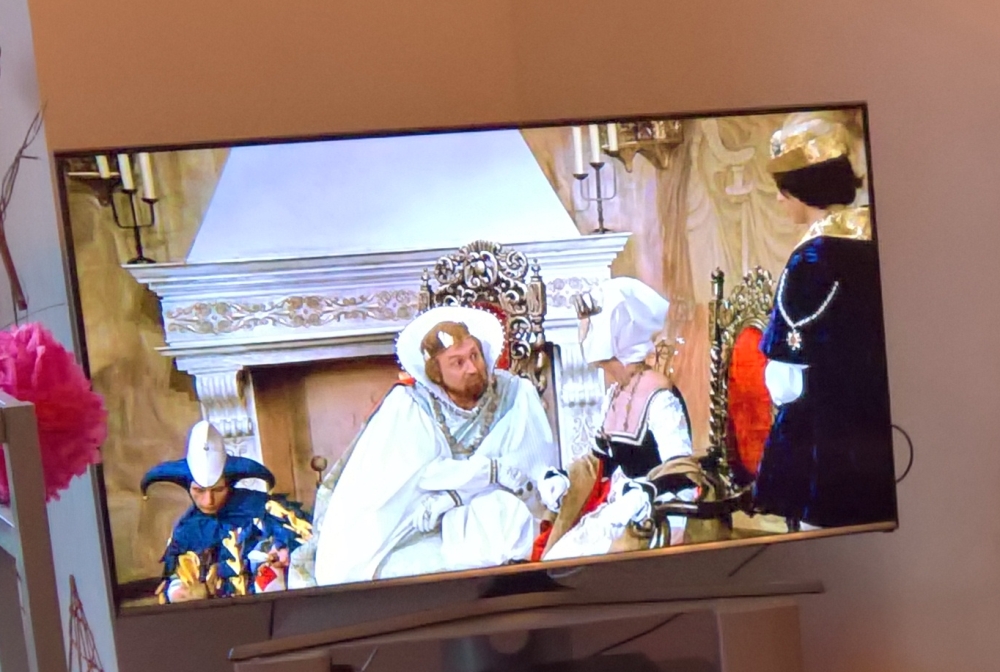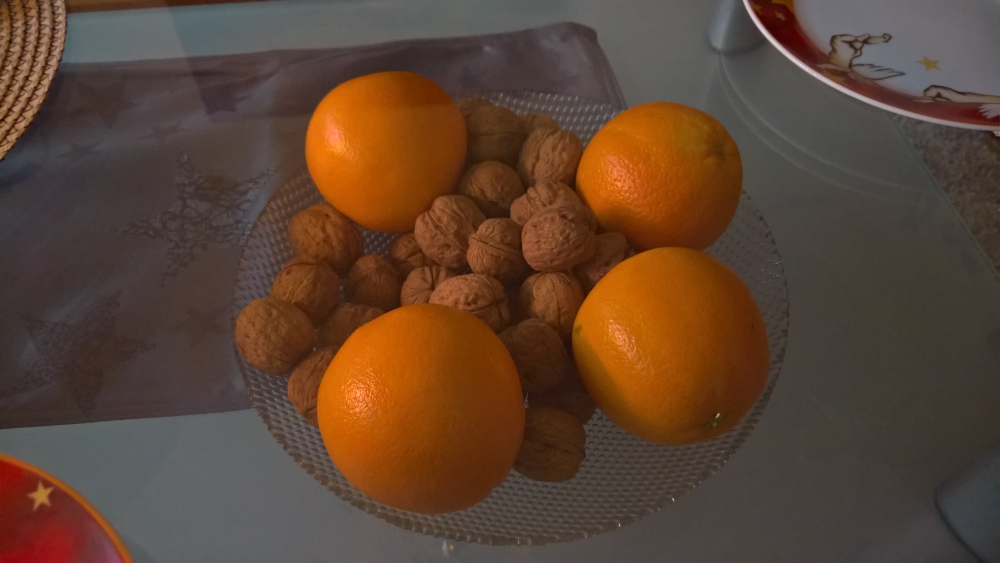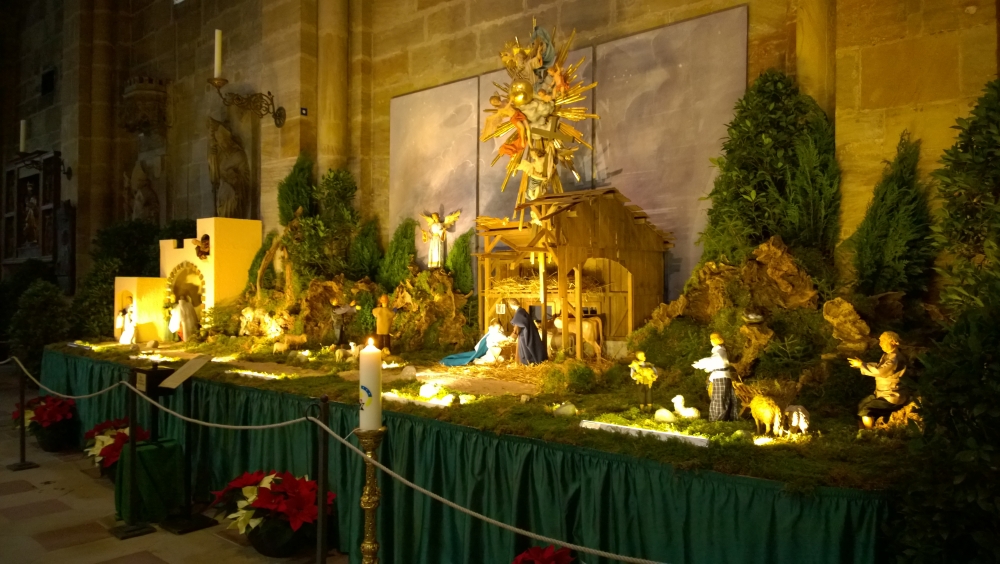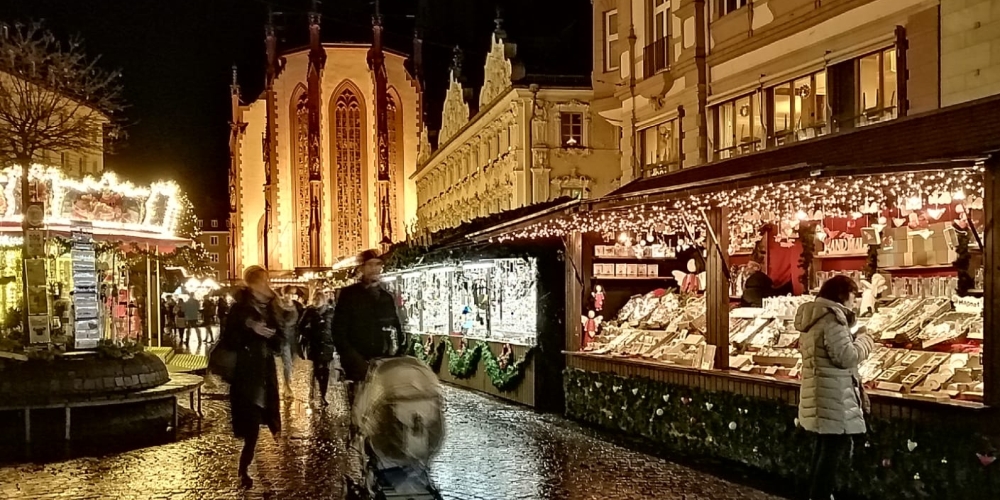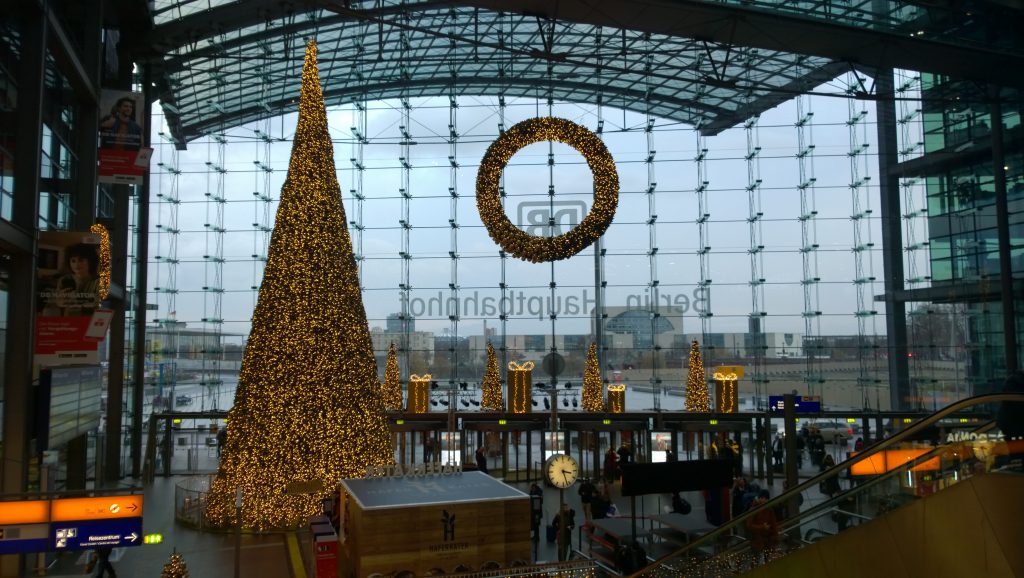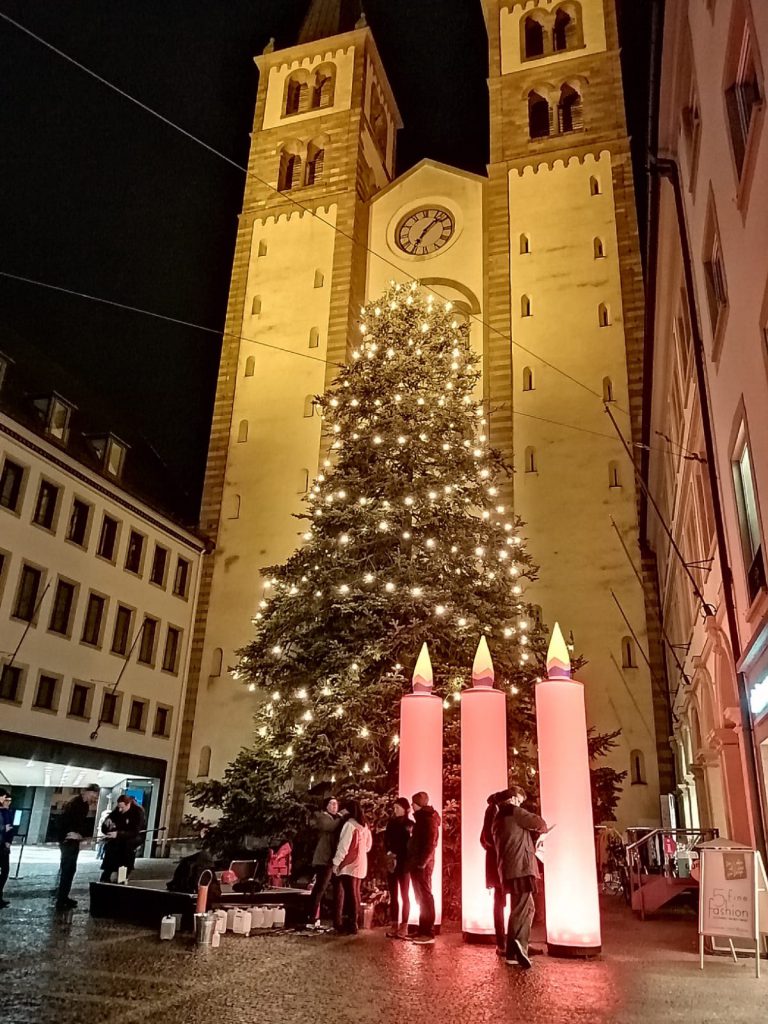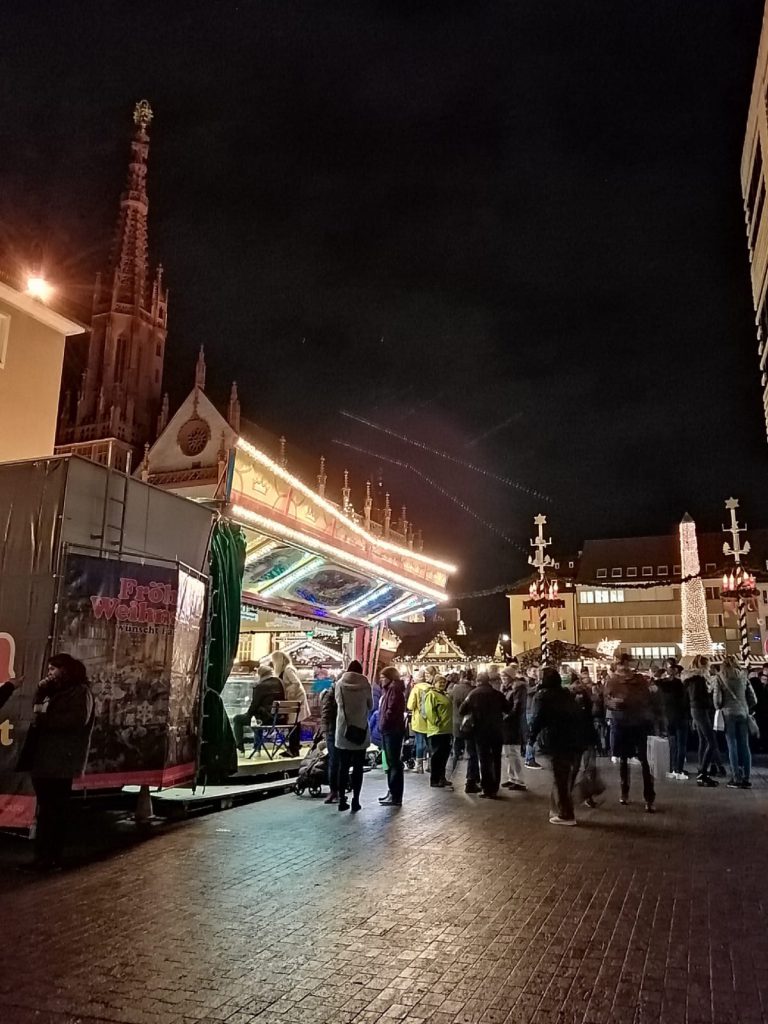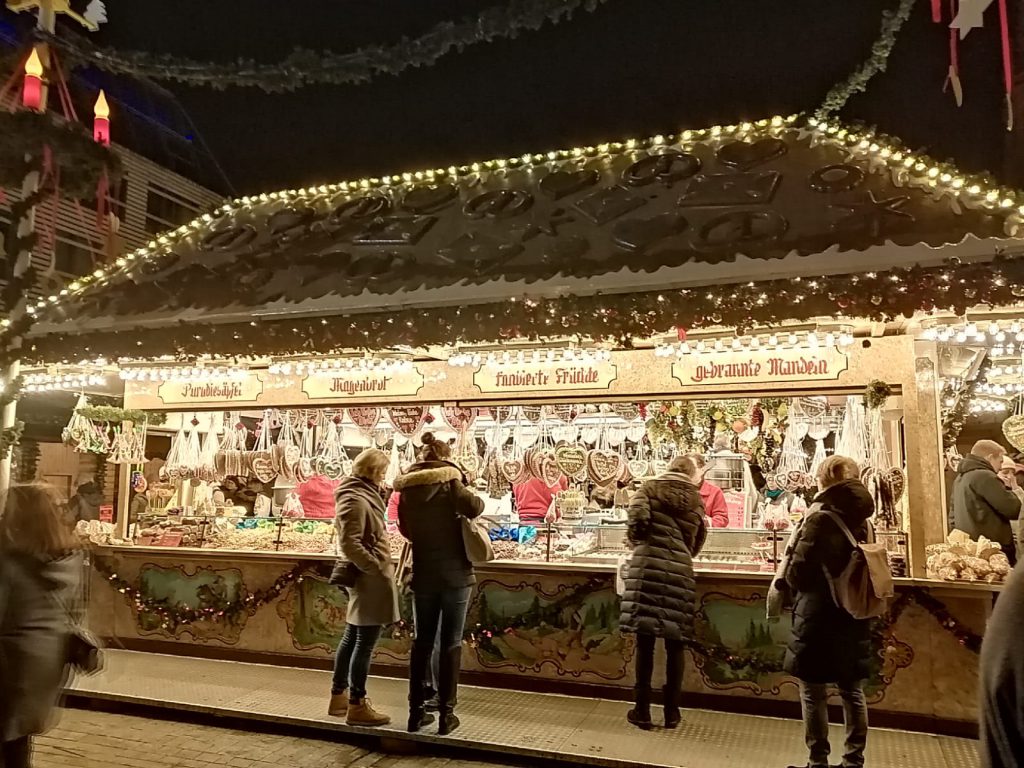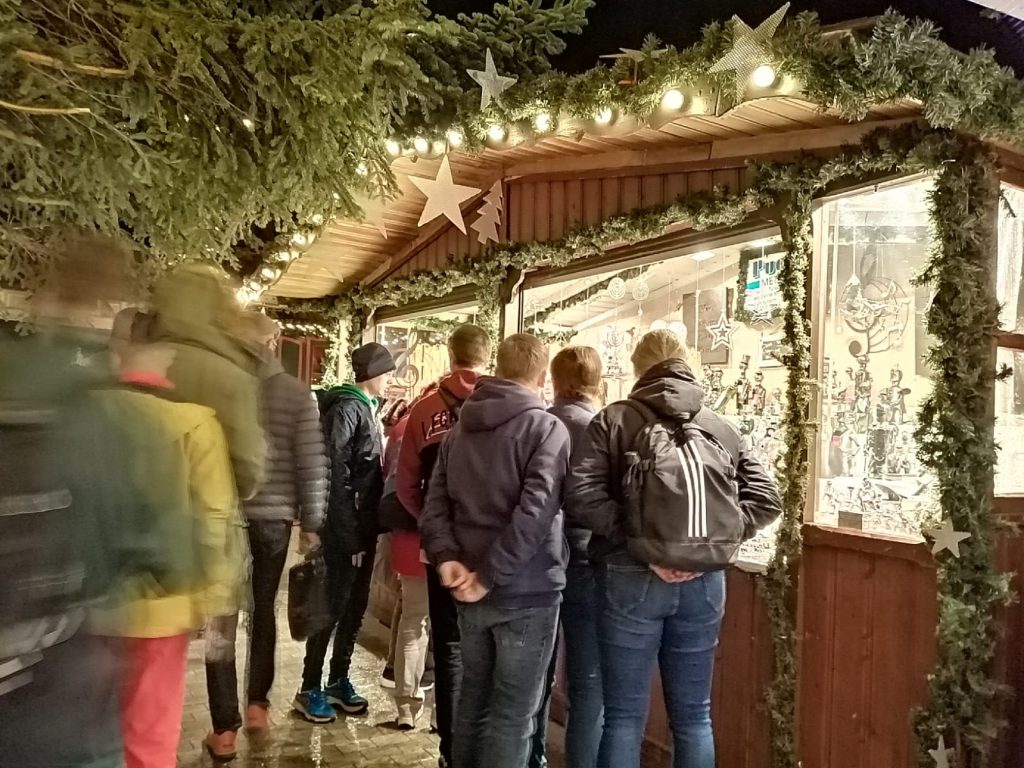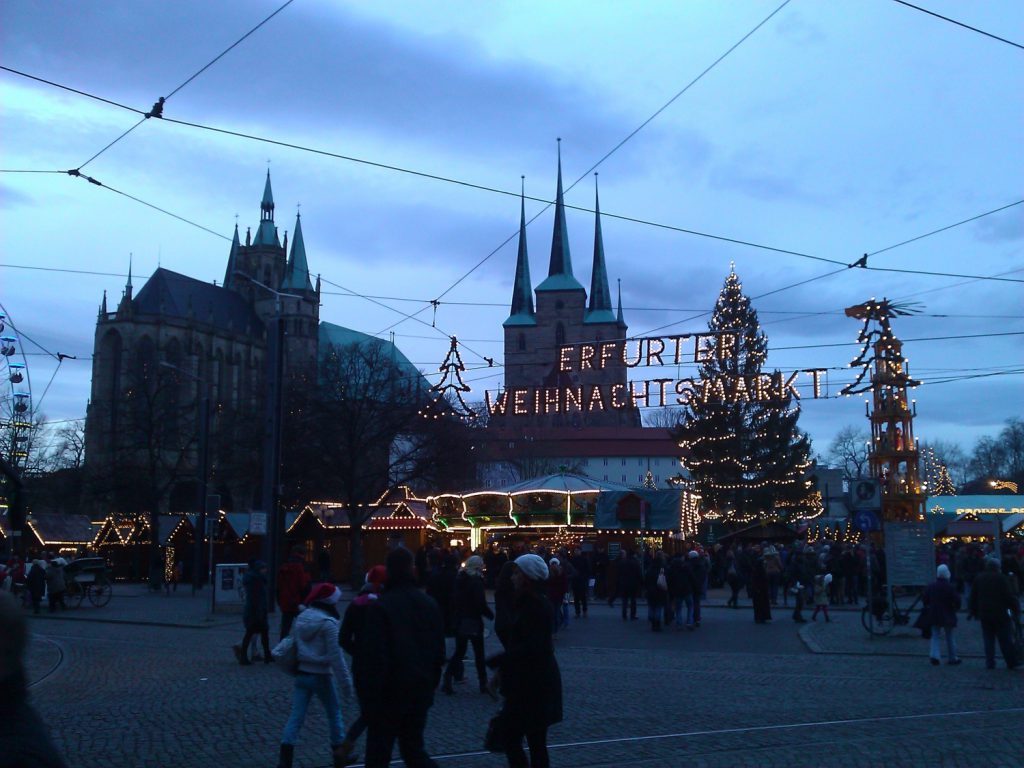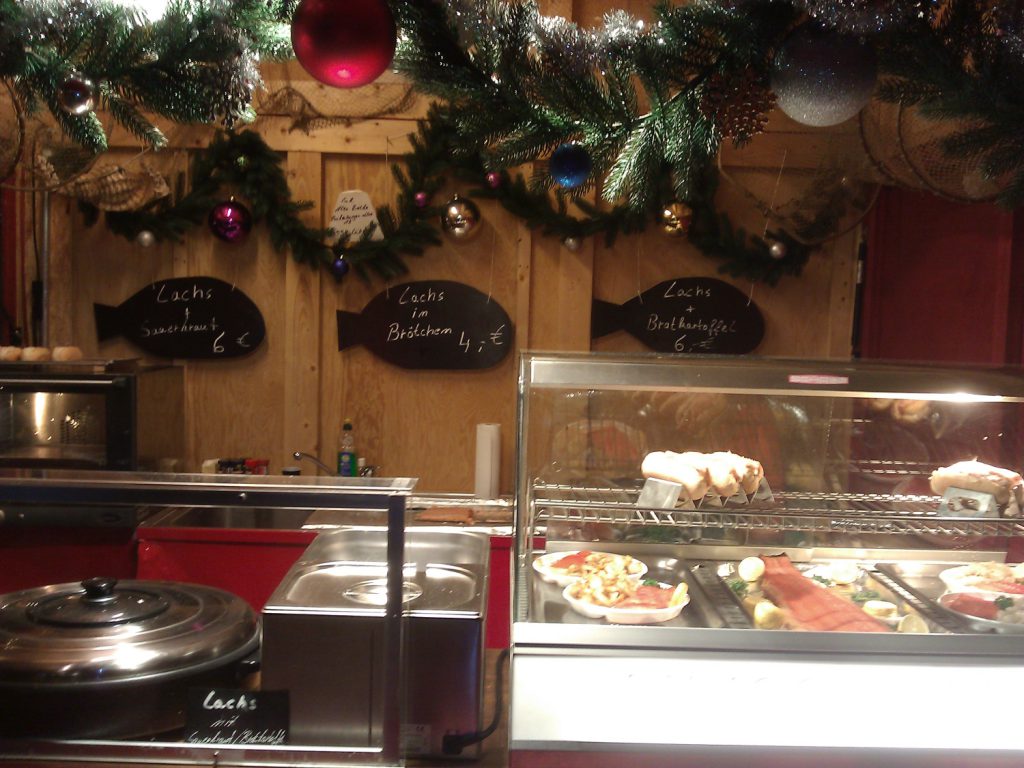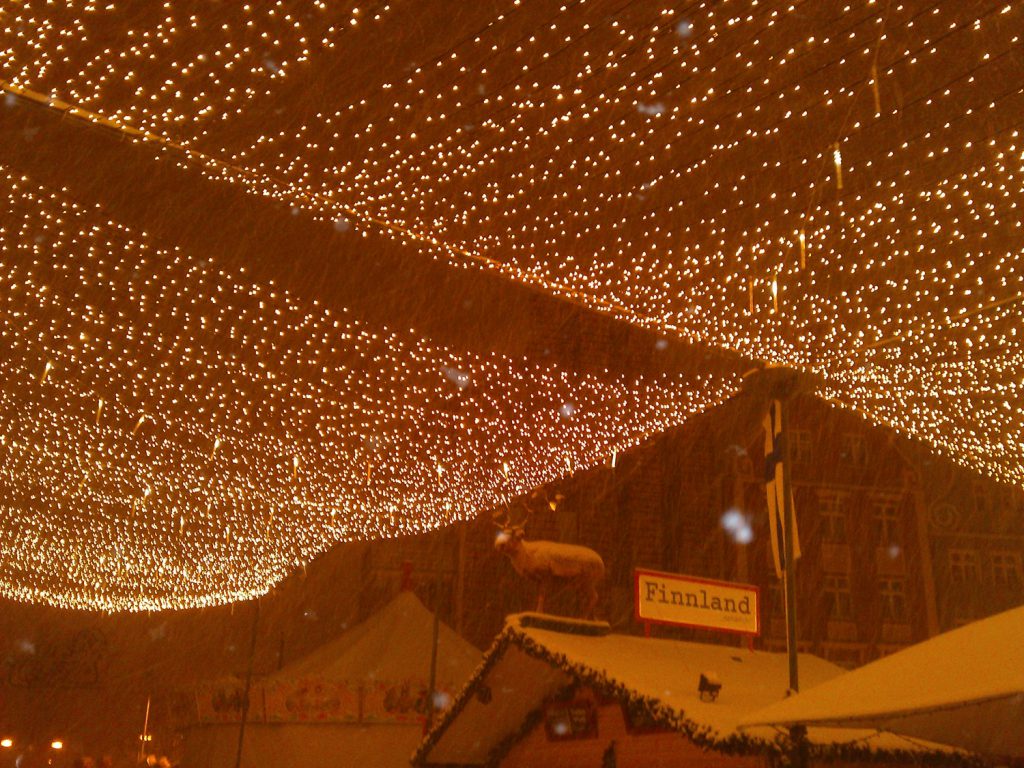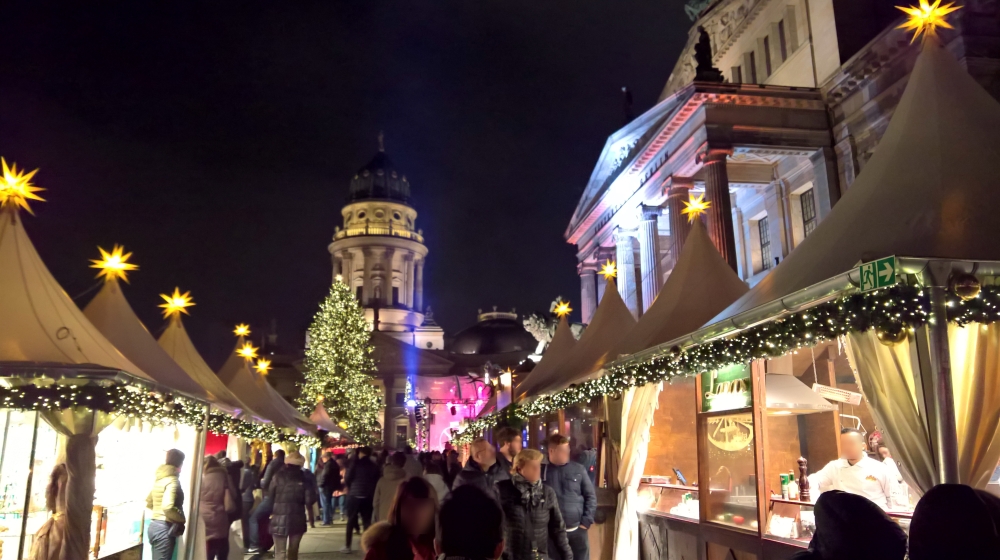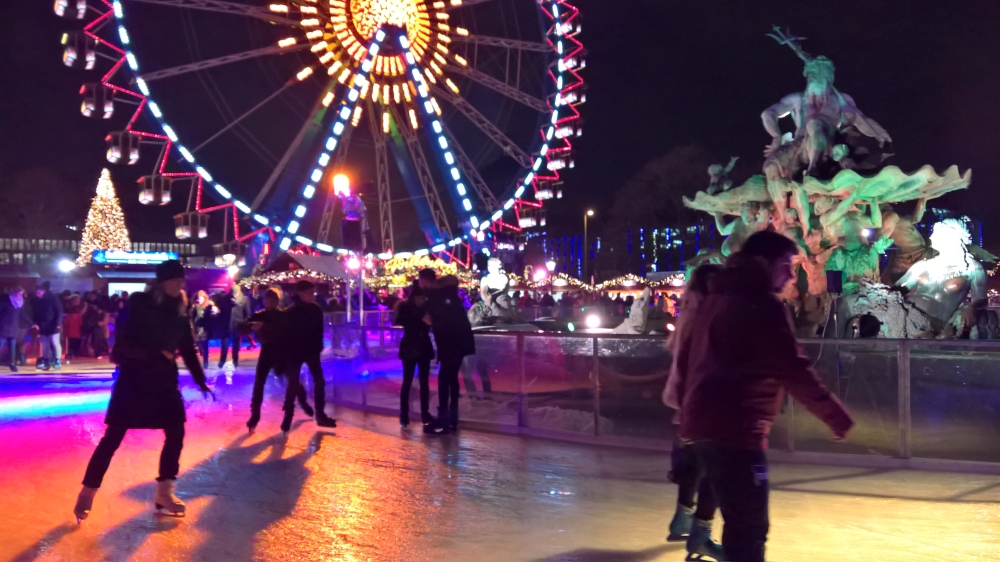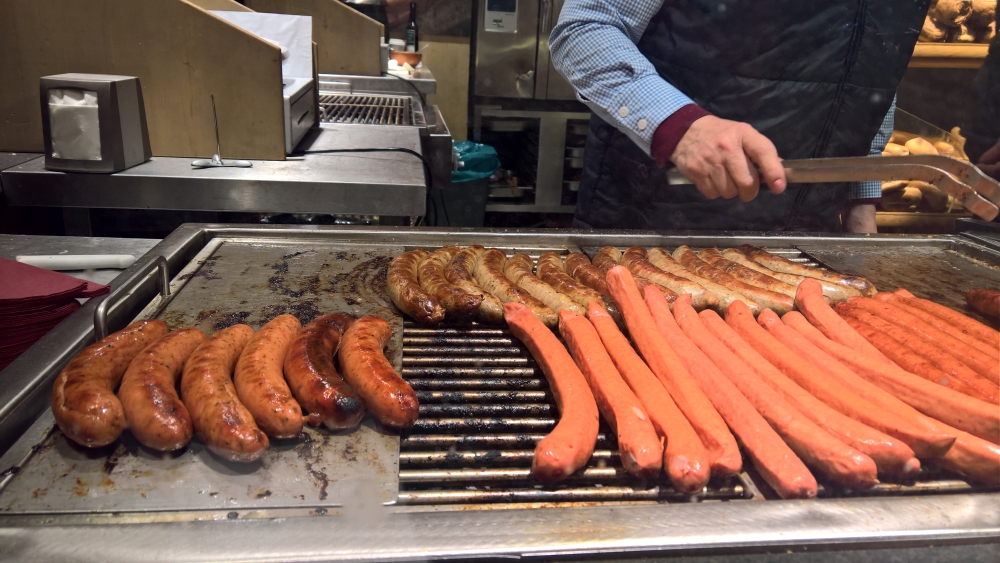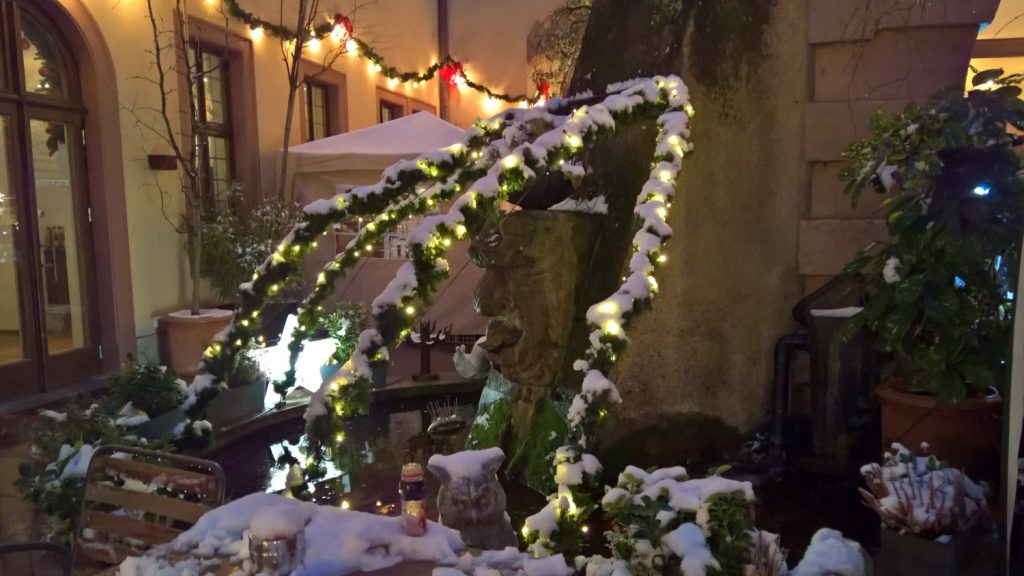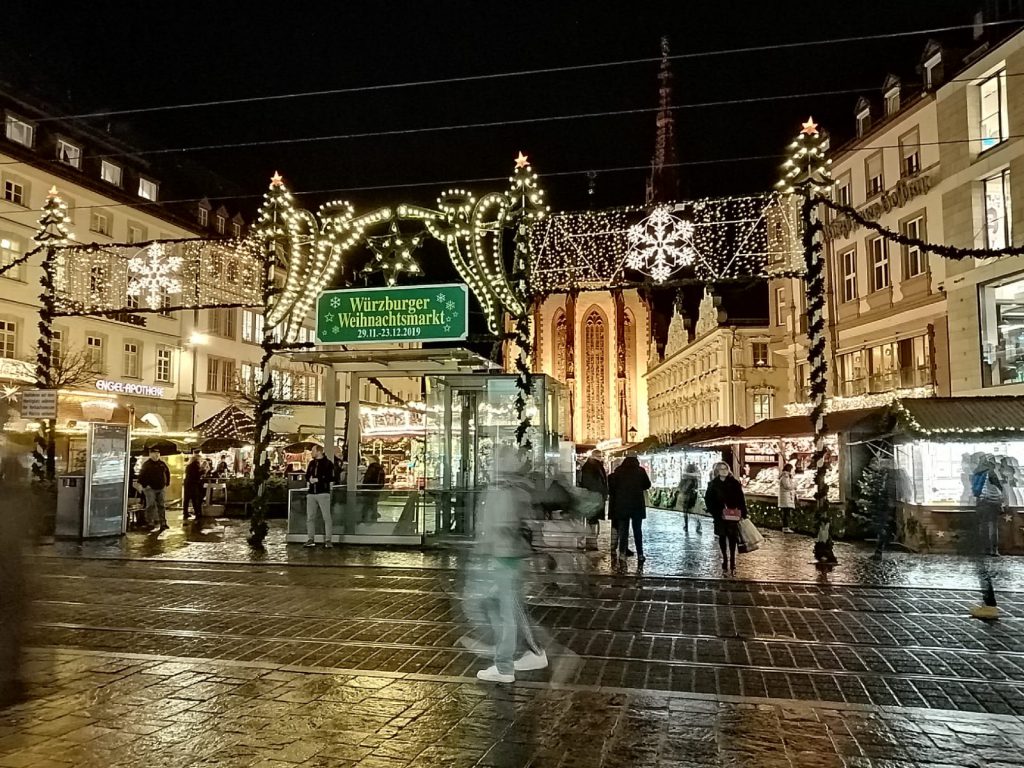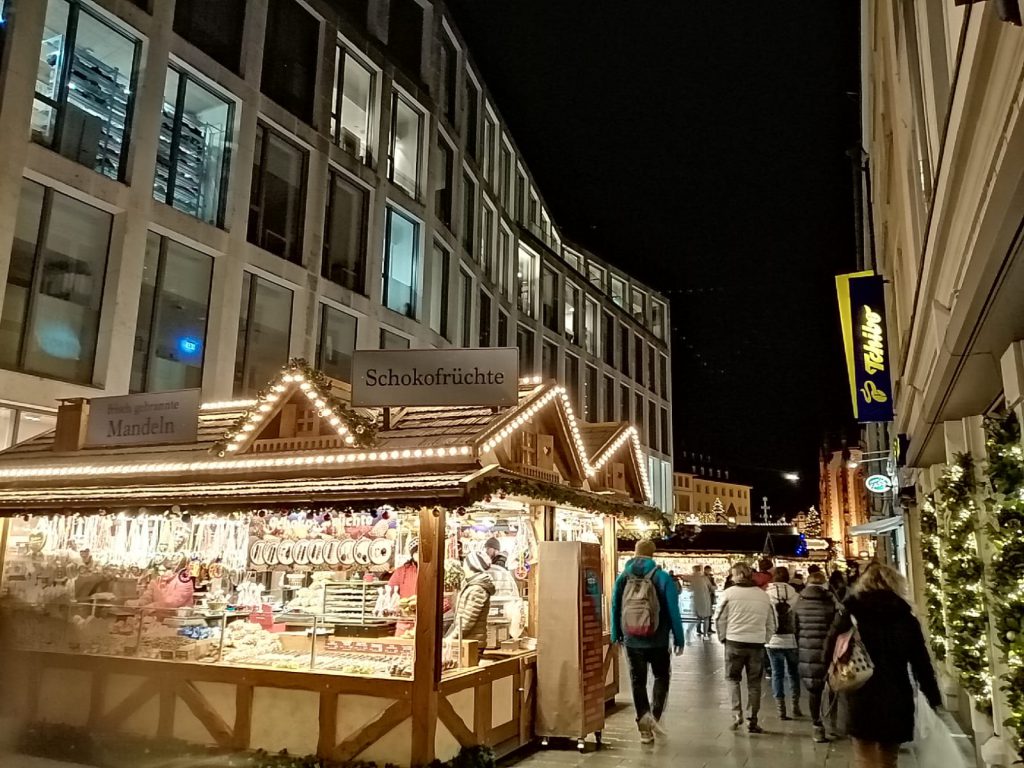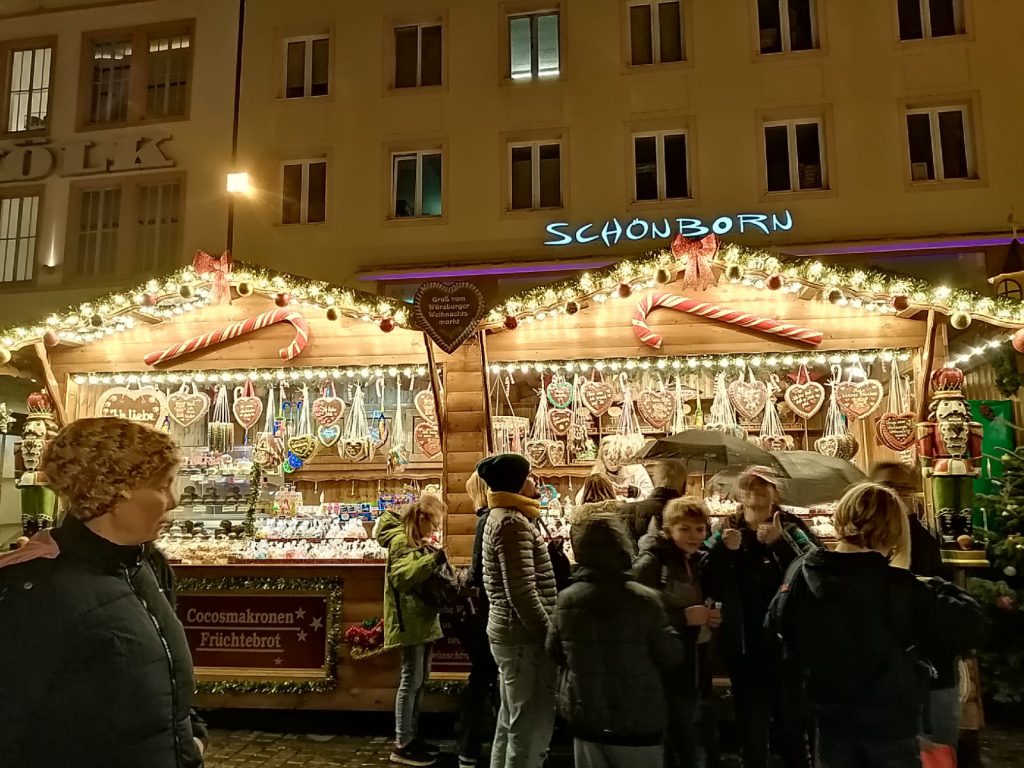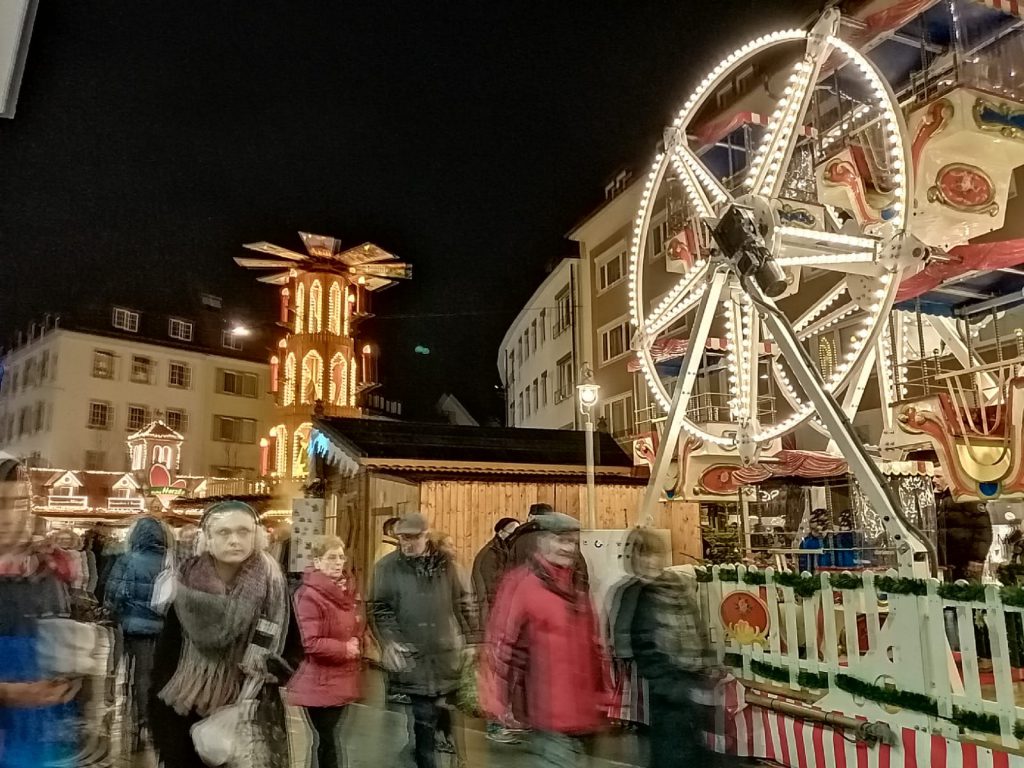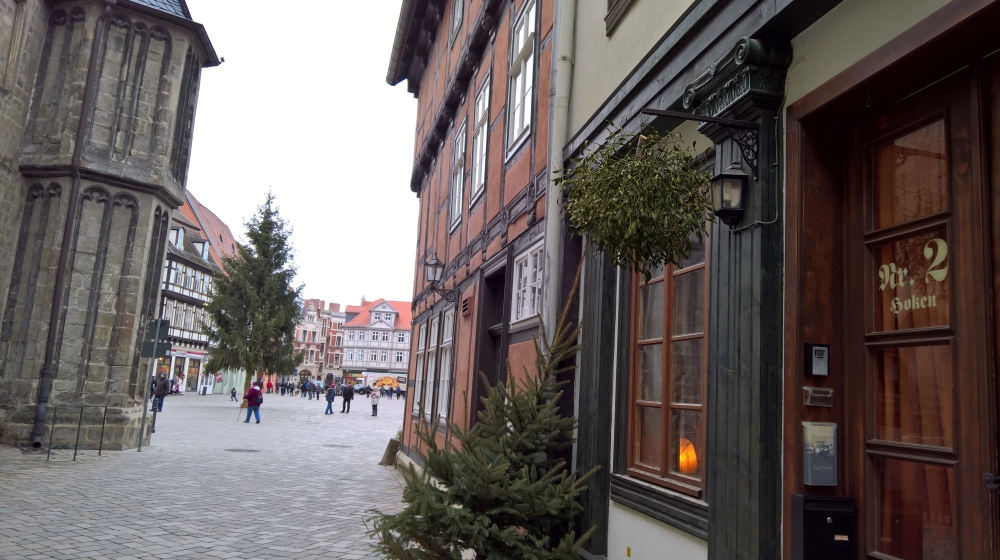After writing about the Christmas season in another post, I would like to write about the festival itself. About what is closely related to time, Christmas Eve, the Christmas holidays and the time after Christmas.
Nativity scenes and nativity plays: Of course part of Christmas is the biblical Christmas story . Mainly in the churches “cribs” are set up. These are a model representation of the stable scene in the Christmas story. In addition in some places a play is practiced and performed by the children of the parishes.
The Christmas season is also time of stories and classic films. On television, many fairy tales are shown. There are classics that have been shown again and again for many years: For example, “3 Haselnüsse für Aschenbrödel” (3 hazelnuts for Cinderella), the Swedish “Michel from Lönneberga” stories of Astrid Lindgren or “Der kleine Lord” (Little Lord Fauntleroy).
At Christmas time you can often see oranges / tangerines, apples and nuts. Background: In the past, these things were not available year round. Apples mature in the fall and are therefore abundant at this time. Nuts are also easy to store and provide plenty of energy in the cold winter. Oranges and tangerines are ready for Christmas (in Southern Europe), so they will be given away for Christmas.
Christmas Eve (Heiligabend), as well as the first and second Christmas Day is designed differently depending on the family tradition. December 24 is not a public holiday. The shops are usually open only until noon. Many people use this as a last resort for shopping. That’s why you should organize the things you need for the festival in advance. During the day the last preparations are made. Traditionally, the Christmas tree is also set up and decorated on this day. The food is prepared and relatives travel to their visits. Believers attend the services. For many people it is one of the few church visits in the year. The evening is usually designed as a quiet celebration in the family. In some families, singing songs or playing instruments is customary. But for those who don*t do it theirself there are concerts, shows, fairy tales etc in TV. Board and card games are also popular. There is definitely delicious food. On Christmas Eve, however, there is the custom of eating sausages with potato salad. This is a simple meal, as a contrast to the elaborate dishes in the next two days.
The gifts will be distributed at the “Bescherung”. If there are children in the family, then a Santa Claus is engaged, who presents the gifts. But that’s not easy! Be prepared to recite a poem or sing a song to get the gift. Depending on the region the “Christkind” (Christ Child) brings the presents. This is of course not to be seen, so the children can be surprised by the fact that the gifts are suddenly there. Even if no special Santa Claus comes, then usually someone who will distribute the gifts – including fun factor. Big or small gifts, bought or homemade. Everything is possible what you can imagine. The most important thing is that you spend a nice evening in the family.
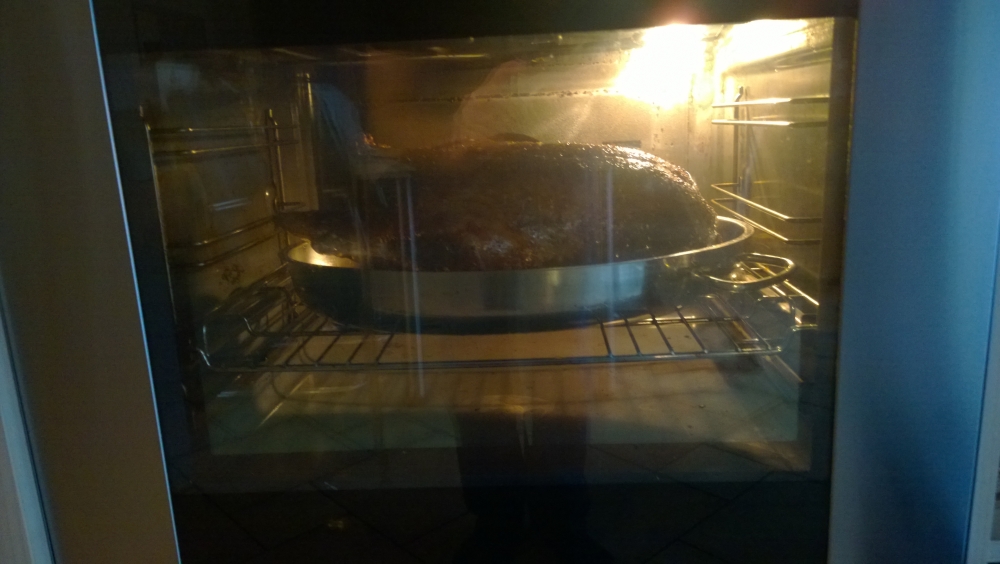
duck in oven | Photo: Robert Behrendt 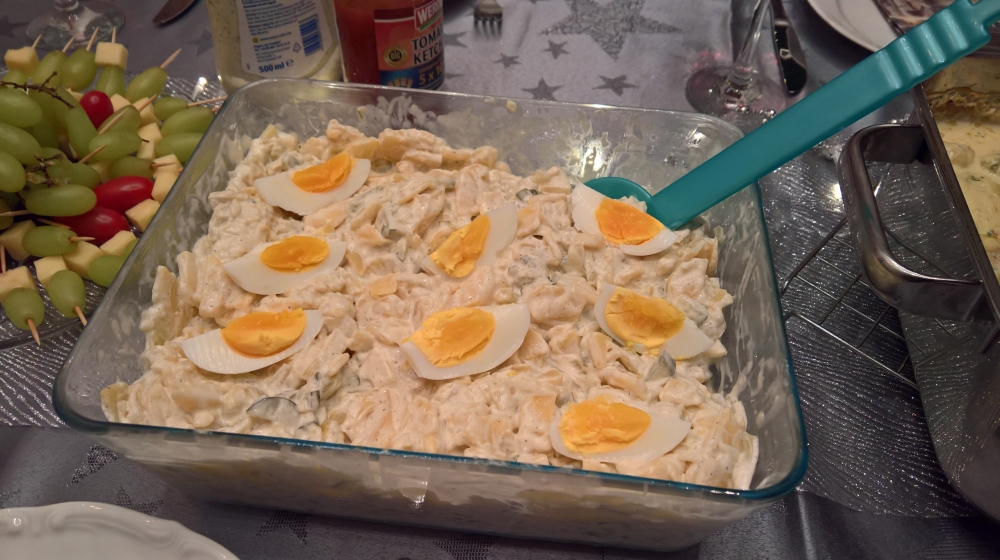
north german style potatoe salad (Kartoffelsalat) | Photo: Robert Behrendt 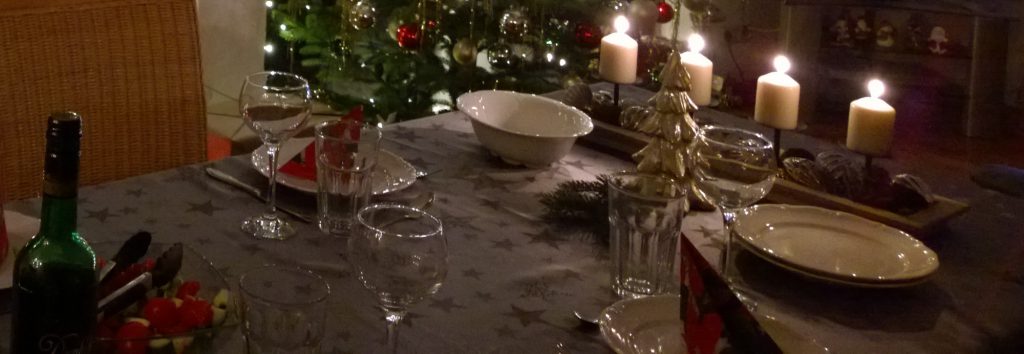
Photo: Robert Behrendt
Appearance of Santa Claus: Has developed from “Nikolaus” (St. Nicholas). The look of Santa Claus was very various until the 30s. There were different ones. often inspired by the bishop-origin. Coca Cola in the US did not invent Santa Claus, but he has made the red-and-white style popular worldwide and unified it! It was used for an advertising campaign, with red and white chosen from their own colors.
The Christ Child: Martin Luther, as a reformer of the church, rejected the worship of saints (Catholicism) and sought a replacement for Nicholas, who was a bishop and was canonized.
The first and second Christmas day will also be used for visits. And of course, to try the gifts 🙂 In these days meals are very well. Very typical are goose or duck with red cabbage and dumplings. Often one uses the time for visits with relatives. Ironically, Christmas is always associated with family quarrels. Especially when meeting relatives who do not really like each other. And of course you can not force harmony and contemplation … When the party is over and you do not see it for a long time, everything is fine again. See you next Christmas …
To find out what the Germans really do on 25 and 26 December, you have to ask them. That is different according to taste. One can of course assume that there are people who do not join in all this bustle. These Christmas muffle are looking for these days occupations that have nothing to do with Christmas. Or they go on vacation at the time!
The time between Christmas and New Year’s Eve is also called the “Zeit zwischen den Jahren” (“time between the years”). Many people take a vacation. Some companies do not work or almost do not work at all., But with New Year’s Eve the quiet time ends . Traditionally, the Christmas tree and all other decorations will be dismantled on January 6th. The decoration will be stored and is waiting for the next Christmas. In Germany, of course, its regulated how the Christmas trees are disposed of! Either there is a special date, at which the city cleaning makes an extra Christmas tree tour to collect everything. Or (usually in smaller places) there is a small cozy party, the “Christmas tree burning”, in which usually the local fire department burns all the Christmas trees of the place in a big fire.
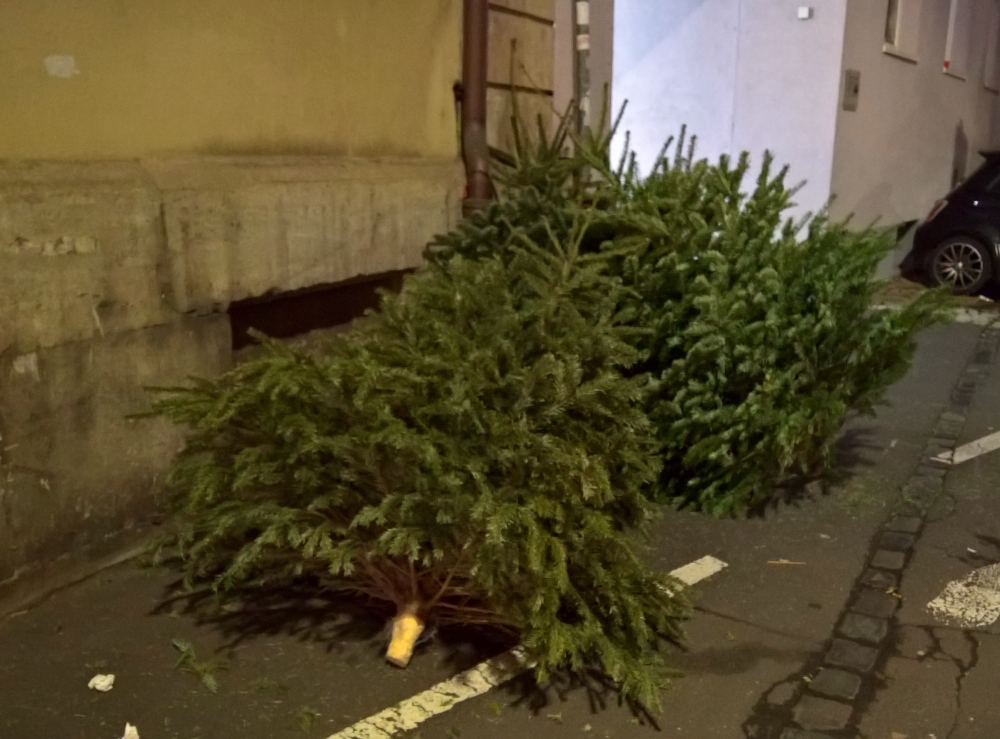
January 6 is the day of the Magi (“Heilige 3 Könige” / holy three kings). This is especially important in Catholic regions. In some states it is also a public holiday. There is the tradition of the “Sternsinger” (“star singers”). Thereby children draw as holy 3 kings dressed in the houses, sing and collect donations for the poor, etc. In large places you have to order them. As a conclusion you get a blessing at the front door. It is the last part of all Christmas dates. This will be the end of the year.
Christmas is a Christian festival enriched by geography and history. Winter solstice is the highlight of the cold, dark winter and the end of the year. Germany is Christian in its history, and Christians celebrate the birth of Jesus Christ at this time. This festival has become an integral part of the culture. The religious aspect is still noticeable, but is now only one part. Most of the things I’ve described here are beautiful traditions and customs even without the religious occasion. Regardless of origin, people without faith or other religions also more or less commit to traditions. It is the time of light in the dark, the review of the old year and a look into the new year. It’s holidays for the family, contemplation, peace … So it’s something that is important to all people.
